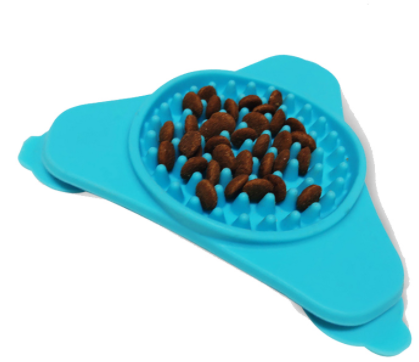the right food and feeders to attract a wide range of avian visitors.
Variety Begets Variety
Pet retailers can build a loyal following of backyard bird watchers by offering the right food and feeders to attract a wide range of avian visitors.
In order to attract a wide variety of wild birds to their front lawns and backyards, avid bird watchers must have the right feeders and food assortment to appeal to various species. This is where pet stores can shine. By offering a variety of wild-bird food and feeders, retailers can make loyal customers of these avian enthusiasts.
While many bird lovers still commonly offer seeds, and for good reason—black-oil sunflower seeds will bring in the largest variety of birds—these days, most will also feed suet. This is a trend that has been observed by Bill Gleason, owner and president of Wildlife Sciences in Minnetonka, Minn. “Suet has become a staple of the wild-bird section at retail,” he says. “Avid birders are keenly aware of the appropriate value for staple items, like black-oil sunflower seeds and suet.”
Suet is particularly popular in areas where it gets very cold in the wintertime.
However, retailers should explain to customers that suet can be offered all year long, as some suet blocks are made to withstand warmer temperatures. Woodpeckers, in particular, appreciate the extra energy that suet provides while raising baby birds. In fact, when the young woodpeckers fledge, the adults will bring their young to the suet feeder to show them where they can find food.
Suet usually comes shaped in a block, but it can also be found in the form of balls and other shapes.
Most manufacturers offer suet in many flavors, such as peanut butter, and they often add ingredients such as mealworms, peanuts and seeds to attract even more birds. This increasing variety can be quite beneficial to retailers when building eye-catching merchandising displays that will drive sales.
“Providing an attractive and colorful display of suet that allows consumers to quickly identify their favorite flavors is important for increased sales,” Gleason says, adding that packaging featuring bold, vivid graphics and easy-to-open, no-mess handling is also helpful to sales.
Adding even more depth to the wild-bird section of pet stores is the growing variety of suet feeders available on the market, including simple cage feeders, as well as logs and cylinders with cutouts that can be filled. Of course, the most important consideration with any bird feeder is its ability to keep squirrels away—squirrels will eat a whole suet block quickly, if given a chance.
One solution is to use a feeder with baffles, which block squirrels’ access to the food. Another way to stop the squirrels is to use feeders that have built-in mechanisms that close the feeding ports when too much weight is applied.
Other feeders move or collapse under a squirrel’s weight, making it impossible for the animal to get to the suet. Feeders can also be placed inside a cage that the birds can get in and out of, but that the squirrels cannot.
With a combination of both a suitable feeder and the right food—suet and high-quality seed—a bird lover can attract a broad range of free-flying companions to their homes. However, one group of wild birds will not be brought in with seed or suet—hummingbirds. Mainly nectar eaters, hummingbirds will migrate up from Central and South America in the late spring when the flowers are blooming. While they can be found all over the United States, one species of hummingbird—the ruby-throated hummingbird—is only found east of the Mississippi river, for the most part.
Although hummingbird food can be made simply with water and sugar—four parts water to one part sugar is the correct ratio—prepared hummingbird food will be more nutritious for these high-energy birds. It can come in the form of a liquid or a powdered mix, but note that no matter which hummingbird food is offered, it should never be dyed a red color, as that can actually hurt the animals it is intended to nourish.
While the hummingbird food should not be red, the feeders should be brightly colored—and red is the color that attracts hummingbirds the most. Feeders come in many styles, but it is best to offer those that are easily cleaned. Hummingbird food needs to be changed at least out twice a week, depending on how warm it is outside. The inside of the feeder also needs to be cleaned thoroughly at least once a week. A hummingbird usually will not return to a feeder where the food has gone bad, even after it has been cleaned out and stocked with fresh food.
Pet stores do not have to carry all the feeders and wild-bird food available, but they should carry a high-quality seed mix, feeders and some specialized items, such as suet and hummingbird food and feeders. Many pet owners feed wild birds and consider them their outdoor pets, and seeing new bird species at wild bird feeders is especially exciting. A pet store that can help make this happen for its customers is going to be very successful.
Pet retail veteran Robyn Bright has a master’s degree in parrot biology.





 4
4
